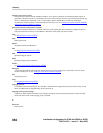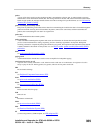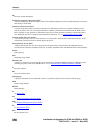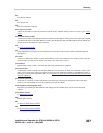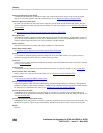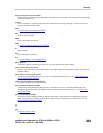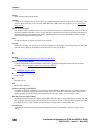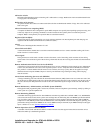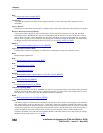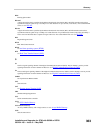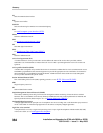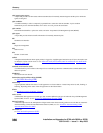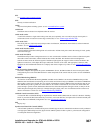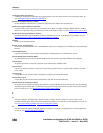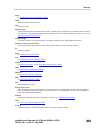
Glossary:
362
Installation and Upgrades for G700 with S8300 or S8700
555-234-100 — Issue 3 — May 2003
REN
See
ringer equivalency number (REN).
reorder tone
A tone that the system delivers when a trunk, a digital transmitter, or some other facility that is needed for a call is
unavailable.
report scheduler
Software that is used with the system printer to schedule the days of the week and the time of day that reports are printed.
Resource Reservation Protocol (RSVP)
A protocol that allows channels or paths on the Internet to be reserved for the transmission of video and other high-
bandwidth messages. With RSVP, users can reserve bandwidth through the Internet in advance, and be able to receive
data at a higher rate and in a more dependable flow than usual. The higher rate and more dependable flow are possible
because a user’s quality of service requests are propagated to all routers along the data path, and the network
reconfigures itself to meet the desired levels of service. See also
Quality of Service (QoS).
RHNPA
See
remote home numbering-plan area code (RHNPA).
ringer equivalency number (REN)
A number that is assigned to a telephone or a similar device to identify how much current the device draws.
RINL
Remote indirect neighbor link
RISC
See
reduced-instruction-set computing (RISC).
RJ45
See
Registered Jack 45 (RJ45).
RLT
See
release-link trunk (RLT).
RMATS
See
Remote Maintenance, Administration, and Traffic System (RMATS).
RMON
See
Remote Monitoring (RMON).
RNX
See private network office code (RNX).
robbed-bit signaling (RBS)
A signaling method that is used in T1. With RBS, each side of a T1 termination sends two bits of data, which are usually
called the A bit and the B bit. These two bits of data are buried in the voice data of each voice channel in the T1 circuit.
Thus the bits are “stolen” from the voice data, and hence the name “robbed bit.”
ROSE
See
Remote Operations Service Element (ROSE).
router
A device that supports communications between local area networks (LANs). Routers can be equipped to provide frame
relay support to the LAN devices that they serve. A router that is frame relay capable encapsulates LAN frames in frame
relay frames and feeds those frame relay frames to a frame relay switch for transmission across the network. A router that
is frame relay capable also receives frame relay frames from the network, strips the frame relay frame off each frame to
product the original LAN frame, and passes the LAN frame on to the end device. Routers connect multiple LAN
segments to each other or to a wide area network (WAN). Routers route traffic on the Level 3 LAN protocol, for example,
the Internet Protocol (IP) address. See also
bridge.



